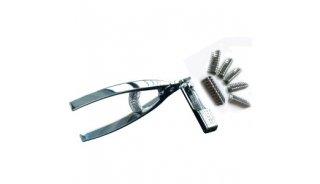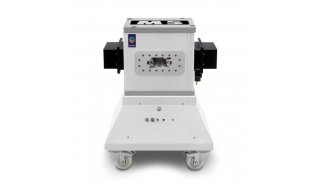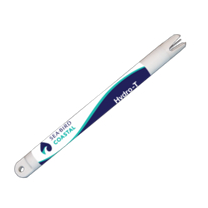Sea Urchin Animal Maintenance
The following is written to help non-marine biologists use sea urchins occasionally in teaching; disregard if you have running sea water tanks in your lab!
Gravid animals can be obtained virtually year round. Animals can be ordered to arrive on the morning required. This assures that they will be fresh, but can lead to nervously waiting around for Fed. Ex. Also, any animals not used are wasted. I prefer to maintain the animals in tanks of Instant Ocean until needed. I have had the best luck withLytechinus pictus, Lytechinus variegatus and Arbacia punctulata.Strongylocentrotus purpuratus are very difficult, but can be stored in the cold room wrapped in wet paper for a few days.
If you plan to do this, set up your tanks several weeks in advance. Introduce some marine organisms into the tank; algae or slimy rocks from the ocean or established marine tanks are ideal. If slimy rocks are not available, it is possible to get dried bacteria for conditioning tanks from fish stores. Ask your supplier for the temperature and salinity that your animals will be accustomed to and adjust your tank conditions if necessary. Salinity can be adjusted with a refractometer or hydrometer.L. pictus and S. purpuratus need to be maintained a lower temperatures (12-15°C); L. variegatus and A. punctulata can be kept at room temperature. It is important to plan on lots of room per urchin, especially for the larger species; I will put 20 L. pictus per 20 gallon tank, but only 6-8 L. variegatus, depending on their size. It is also important to have adequate filtration and aeration; I use a Skilter external filter unit with a bubble filter. Also, illuminate the tank using aquarium lights or fluorescent lights for 12-14 hours per day.
When the animals arrive, gradually acclimate them from their shipping containers in your tank water. If any animals are spawning, DO NOT put them into the main tank. They can encourage others to do the same. Also, watch animals carefully for signs of ill health - drooping spines and listless tube feet- and REMOVE. Dying urchins will release gametes and ... (see above). You can collect gametes from questionable animals and store.
If you keep the animals for more than a few days, they will need to eat. The best solution is to request algae or kelp from your supplier (Marinus and Gulf Specimen are very cooperative about this). With live plants, it is even more important to light the tank, otherwise the plants will die. I have not had much luck with dried seaweed, carrots or lettuce. Change the filters frequently and vacuum the debris from the bottom by siphoning (and replacing about 10% of the water) every week. With care, L. pictus animals can be kept healthy and gravid for months.





















